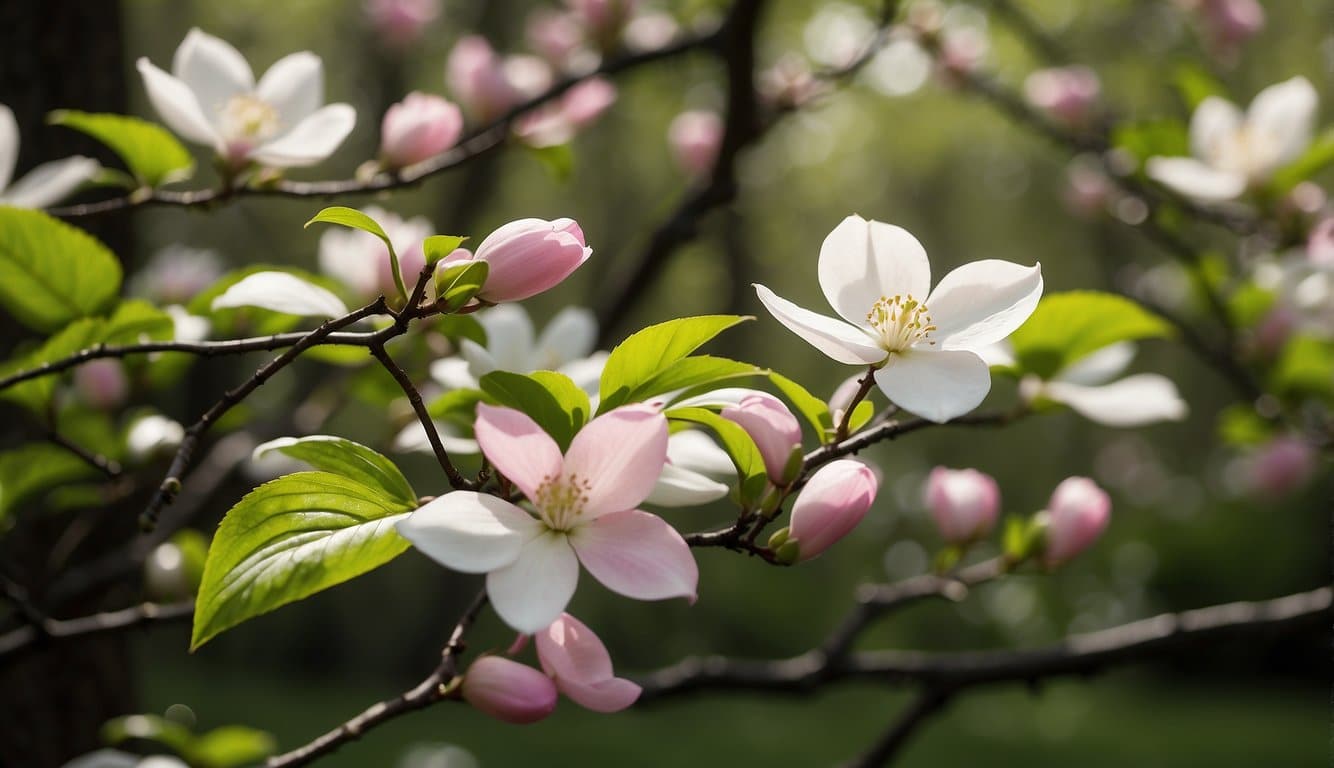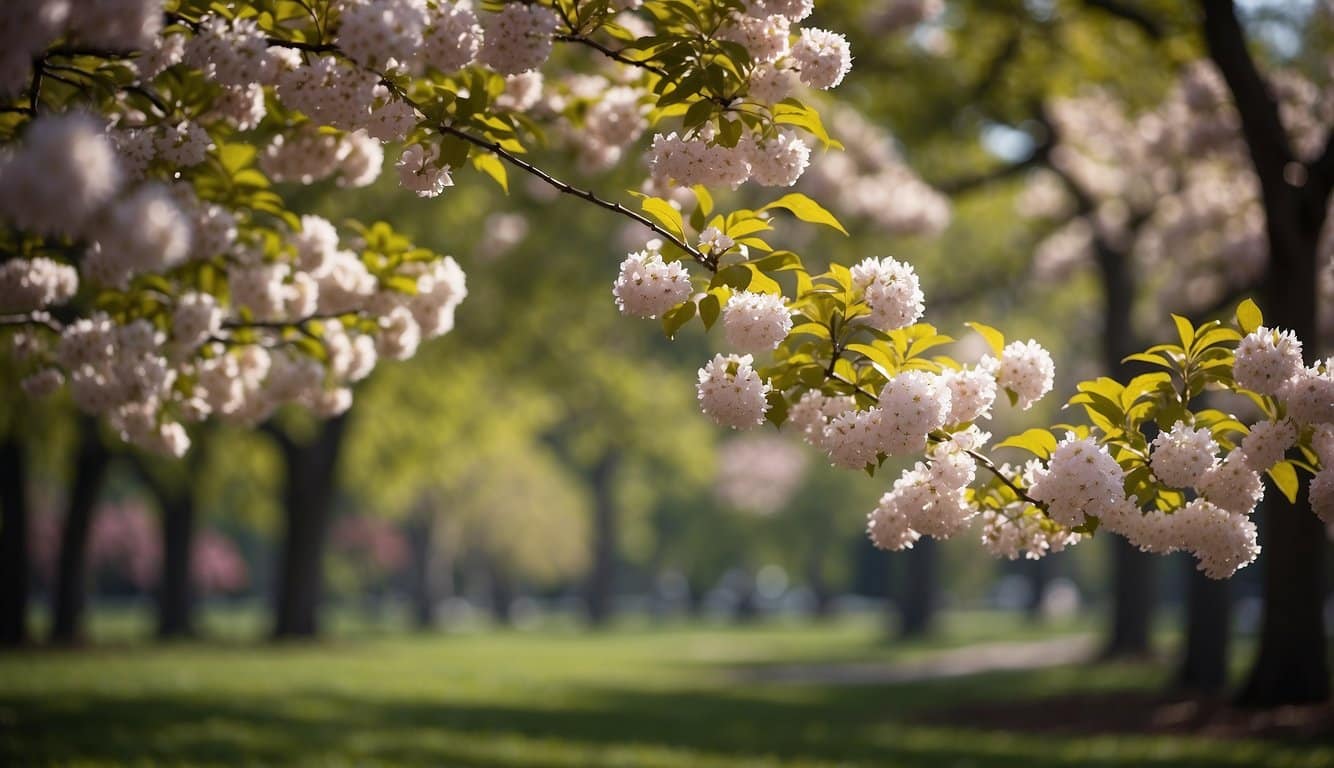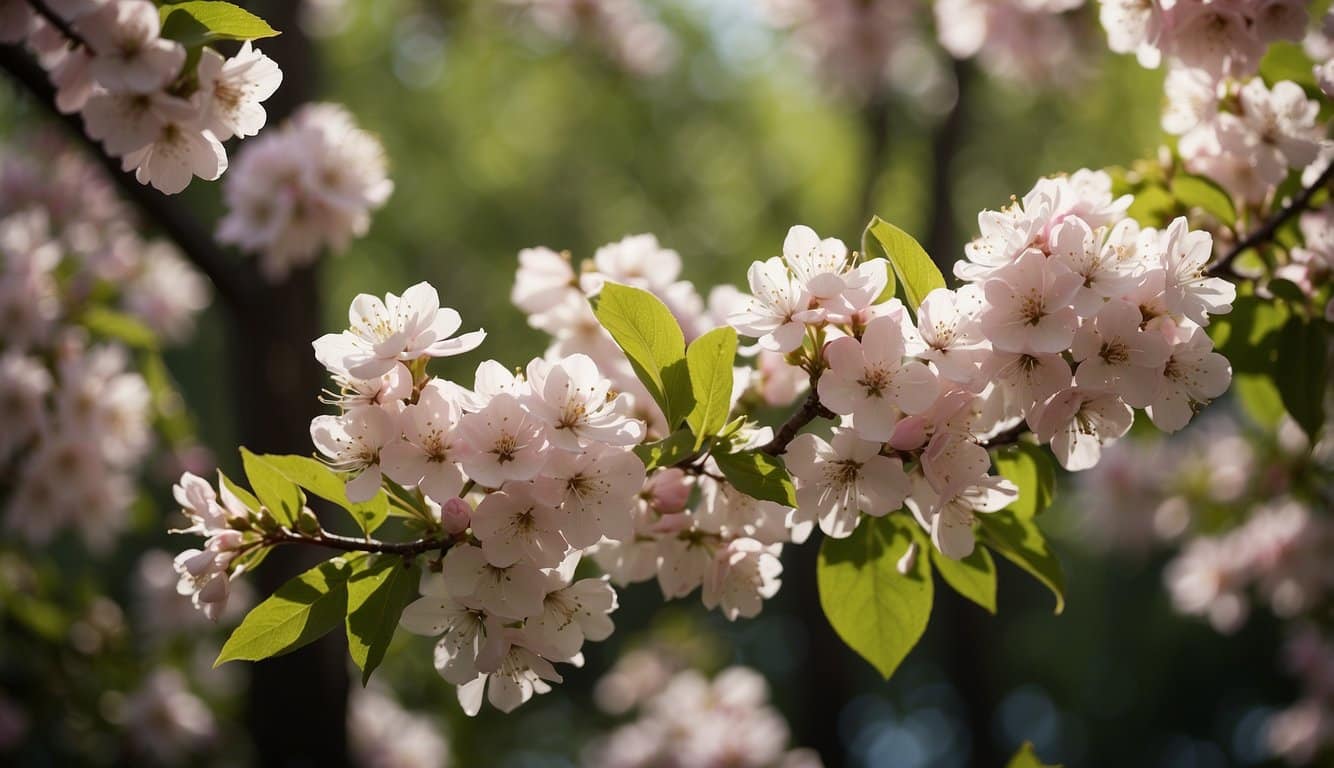Delaware, with its temperate climate and varied soil types, provides an ideal environment for a wide variety of flowering trees. These trees not only enhance the natural beauty of the landscape but also serve as important contributors to the local ecosystem.
The native species, such as the Flowering Dogwood and the Redbud, have adapted over centuries to flourish in this region, offering spectacular blooms while supporting local wildlife with their fruits and flowers.
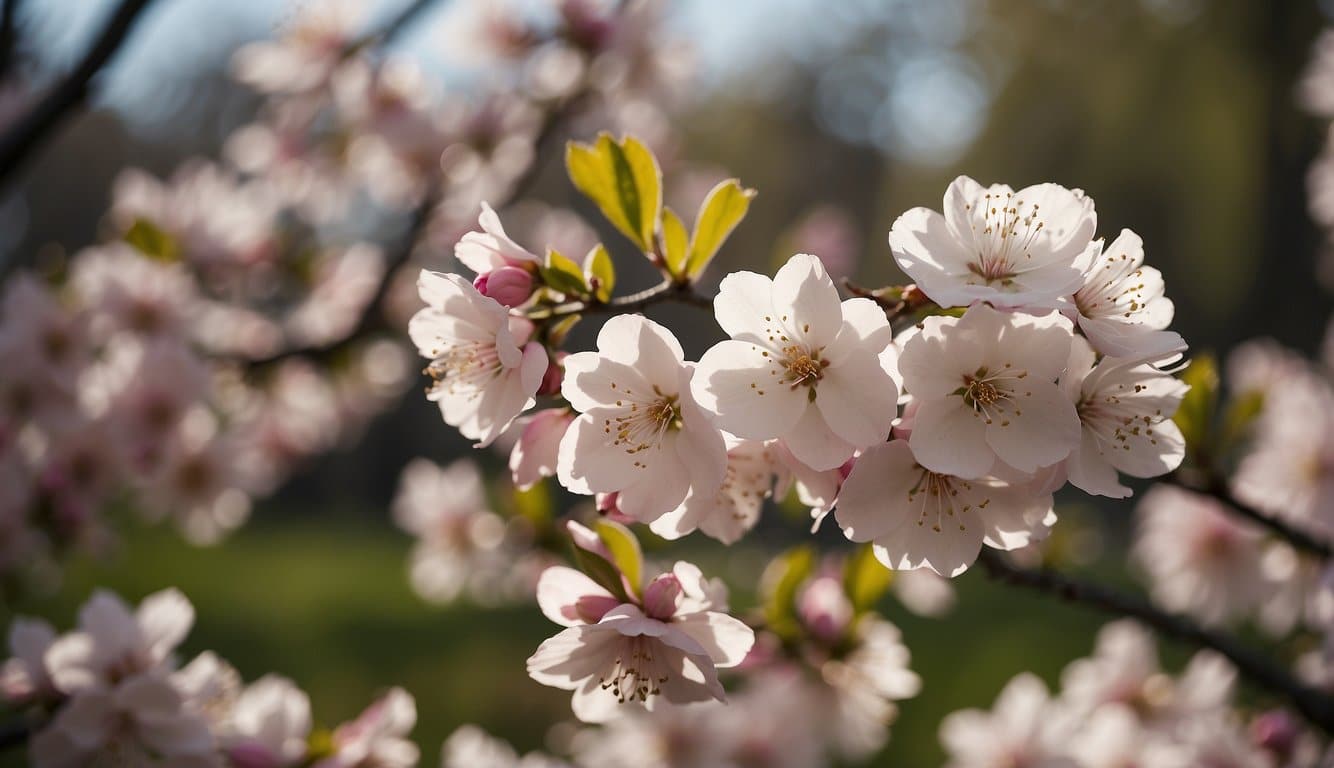
On the other hand, ornamental flowering trees have been introduced for their aesthetic qualities and have become popular fixtures in Delaware’s public and private spaces. These include species like the vibrant Crape Myrtle or the stately Cherry Blossom, which add color and character to gardens and streetscapes.
Beyond their beauty, understanding the planting and care requirements for these trees is crucial for their success and longevity in Delaware’s landscape. Many of these trees have specific needs in terms of sunlight, watering, and pruning, which are essential for them to thrive and for residents to enjoy their blooms through the seasons.
Key Takeaways
- Flowering trees contribute to Delaware’s ecosystem and aesthetics.
- Native and ornamental flowering trees are suited for Delaware’s environment.
- Proper planting and care are key to the thriving of these trees.
Native Flowering Trees of Delaware
Quick Reference Table
| Tree Species | Preferred Habitat | Foliage | U.S. Climate Zone | Additional Notes |
|---|---|---|---|---|
| Eastern Redbud (Cercis canadensis) | Woodland edges, open fields | Heart-shaped, green leaves | 4-9 | Pink to purple flowers in early spring |
| Flowering Dogwood (Cornus florida) | Understory in forests | Oval, green leaves | 5-9 | White or pink flowers in spring; red berries in fall |
| American Holly (Ilex opaca) | Forests, wetlands | Spiny, dark green leaves | 5-9 | Red berries in winter; evergreen |
| Sweetbay Magnolia (Magnolia virginiana) | Swamps, wet woods | Bright green, silver underneath | 5-10 | Fragrant white flowers in late spring to summer |
| Serviceberry (Amelanchier arborea) | Woodlands, open fields | Oval, green leaves | 4-9 | White flowers in early spring; edible berries |
| Black Cherry (Prunus serotina) | Forests, fields | Oval, green leaves | 3-9 | White flower clusters in spring; black cherries in summer |
| Red Maple (Acer rubrum) | Wetlands, forests | Green leaves turn red in fall | 3-9 | Red flowers in early spring before the leaves |
| Eastern Hophornbeam (Ostrya virginiana) | Dry forests, slopes | Birch-like, green leaves | 3-9 | Inconspicuous flowers; hop-like fruit clusters |
| Sourwood (Oxydendrum arboreum) | Upland forests | Lanceolate, green leaves | 5-9 | White flowers in summer; brilliant fall foliage |
| Tulip Tree (Liriodendron tulipifera) | Moist forests | Unique tulip-shaped leaves | 4-9 | Tulip-like flowers in late spring |
More Info on Some of the More Popular Varieties
In Delaware, native flowering trees add aesthetic value and contribute to local biodiversity. One such tree is the Flowering Dogwood (Cornus florida), recognized for its white and pink blossoms in spring.
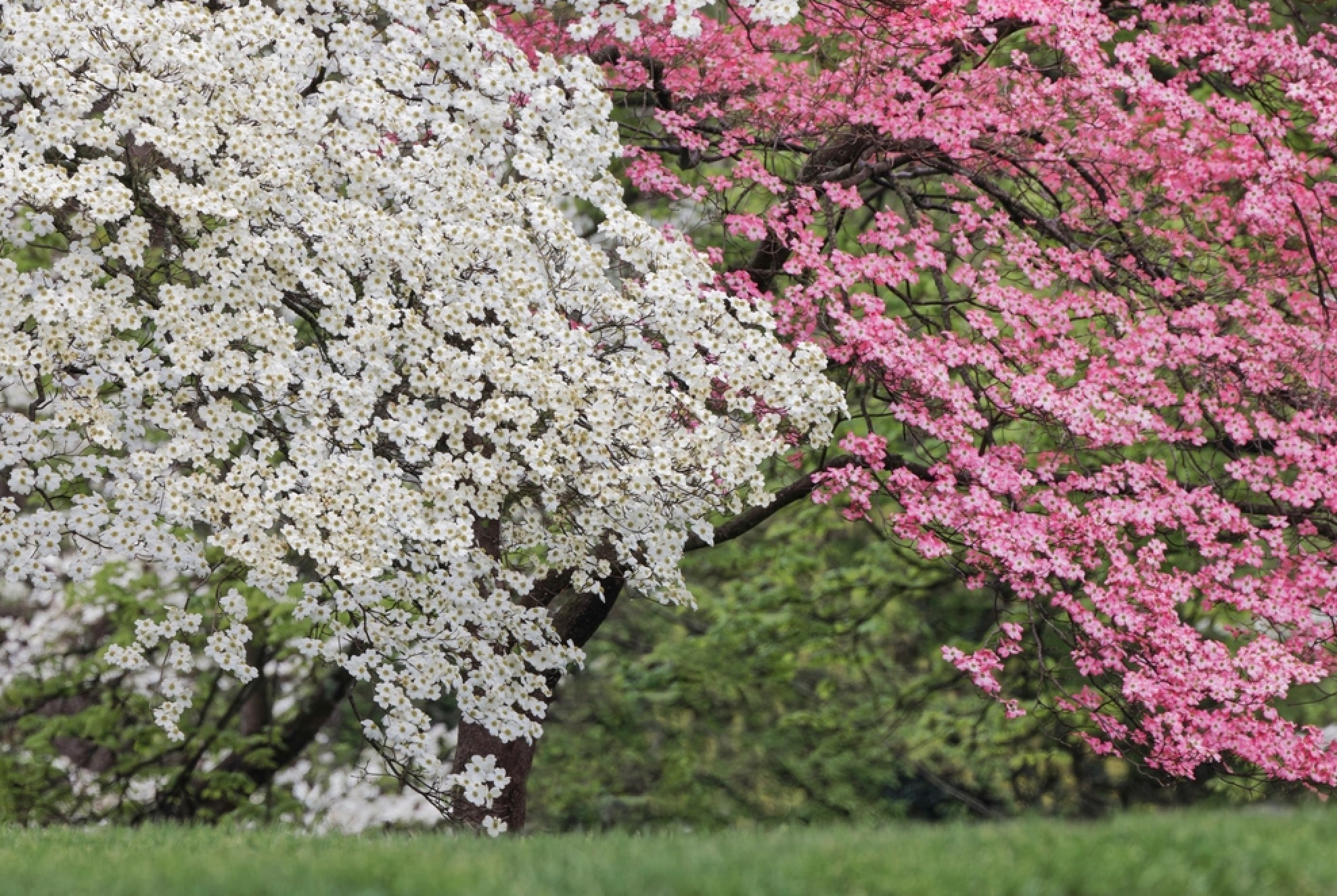
Red Buckeye (Aesculus pavia) stands out with its bold red flower spikes. It’s beneficial for attracting hummingbirds and other pollinators.
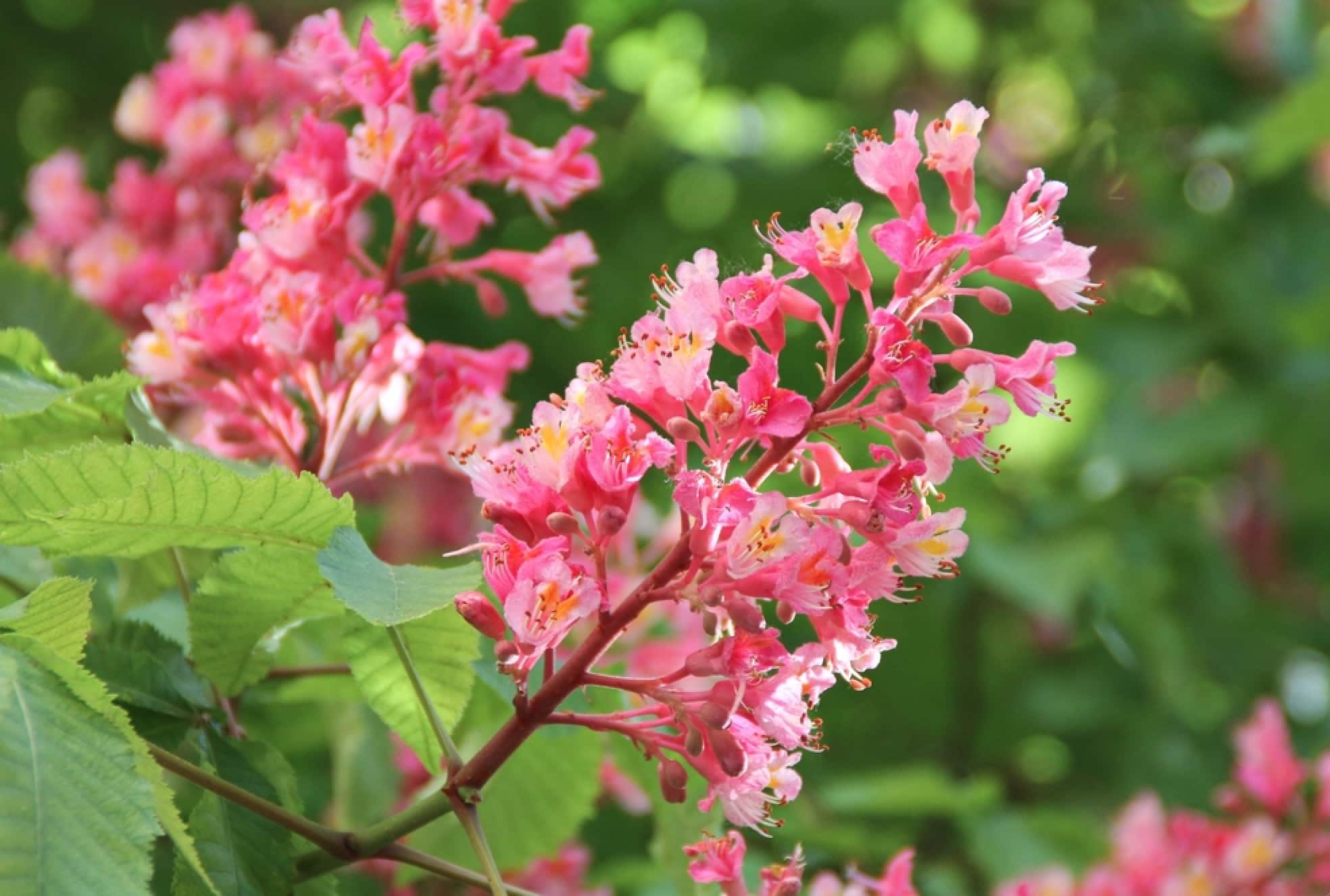
Serviceberry (Amelanchier) species, also locally known as Downy Serviceberry, offer striking white spring flowers followed by edible fruit, and showcase vibrant fall foliage.
Another notable species is the Eastern Redbud (Cercis canadensis), which displays a spectacular spring bloom of pink to lavender flowers along its branches before the leaves emerge.
These species not only embellish landscapes but also support local wildlife:
- Flowering Dogwood: berries for birds and mammals
- Red Buckeye: nectar for hummingbirds
- Serviceberry: fruit for both birds and humans
- Eastern Redbud: nectar for bees and butterflies
| Tree Species | Flower Color | Wildlife Benefits |
|---|---|---|
| Flowering Dogwood | White/Pink | Berries for birds, mammals |
| Red Buckeye | Red | Nectar for hummingbirds |
| Serviceberry | White | Fruit for birds, humans |
| Eastern Redbud | Pink to Lavender | Nectar for bees, butterflies |
These trees also play significant roles in their ecosystems, acting as early sources of nectar and pollen for bees and other pollinators when food sources are scarce. They exemplify the harmony between beauty and ecological function inherent in Delaware’s native flora.
Popular Ornamental Flowering Trees
Delaware gardens bloom with a variety of ornamental flowering trees that captivate the senses and enhance the landscape. Among the favorites, the Flowering Dogwood (Cornus florida) stands out with its delicate white or pink flowers that blossom in spring. This small tree is appreciated for its layered branches and striking fall color.
Another cherished species is the Redbud (Cercis canadensis), known for its stunning pink to purple flowers that appear directly on the bark before the leaves emerge. Its heart-shaped leaves add to its ornamental value, making it a delightful addition to any space.
Sweetbay Magnolia (Magnolia virginiana) offers large, creamy-white flowers with a light lemon fragrance. This tree thrives in full sun to part shade and is an excellent choice for wet areas, bringing elegance to damp settings.
For year-round appeal, American Holly (Ilex opaca) boasts glossy evergreen leaves and produces bright red berries that persist into winter. Its decorative aspect is especially pronounced against a snowy backdrop.
Lastly, the Serviceberry (Amelanchier), with its cloud of dainty white flowers, is not only attractive but also provides edible berries for wildlife. In fall, its leaves turn to shades of yellow and red, contributing seasonal interest.
| Tree | Flower Color | Notable Features |
|---|---|---|
| Flowering Dogwood | White/Pink | Fall color, layered branches |
| Redbud | Pink/Purple | Heart-shaped leaves |
| Sweetbay Magnolia | Creamy-White | Fragrant, suitable for wet areas |
| American Holly | White | Evergreen, red berries |
| Serviceberry | White | Edible berries, fall color |
These trees, with their diverse characteristics and beauty, are perfect for enhancing the visual appeal of a Delaware garden. They offer a variety of textures, colors, and shapes to satisfy every gardener’s aesthetic preferences.
Planting and Care for Flowering Trees
When selecting and tending to flowering trees in Delaware, gardeners should emphasize proper location, soil preparation, consistent watering, and vigilant pest management to ensure the health and vibrancy of these ornamental specimens.
Choosing the Right Location
Flowering trees require an area that provides the right balance of light and space. Most species need full sun to thrive, meaning at least six hours of direct sunlight per day. They also need enough room for their canopies to spread without interference from buildings, power lines, or other trees.
- Sunlight: 6+ hours of direct sun
- Space: Ample room for canopy growth
Soil Preparation and Planting
The success of any tree starts with planting it in the right type of soil. Flowering trees in Delaware often prosper in moist, well-drained loamy soil. It’s crucial to test the soil pH and adjust it according to the specific needs of the tree.
When planting, follow these steps:
- Dig a hole twice as wide as the root ball.
- Position the tree so that the top of the root ball is level with the soil surface.
- Backfill the hole with a mix of native soil and compost.
- Water thoroughly after planting.
Watering and Maintenance
Post-planting care is vital for establishment. Flowering trees generally require around 1 inch of water per week, whether through rainfall or manual watering.
Mulching helps to retain moisture and regulate soil temperature. A 2 to 3-inch layer of mulch should be applied, keeping it away from the tree’s trunk to prevent rot.
- Water: 1 inch per week
- Mulch: 2 to 3 inches, avoiding trunk contact
Pest and Disease Management
Regular inspections are imperative for early detection of pests or diseases. If issues are identified, they should be addressed promptly with the appropriate treatment.
Integrated Pest Management (IPM) practices are encouraged, using less toxic methods first before resorting to chemical treatments to minimize environmental impact.
Seasonal Blooming Cycles
In Delaware, the tapestry of the landscape alters with the changing seasons, as flowering trees mark the procession of time with vibrant displays. For those looking to appreciate or cultivate these natural spectacles, understanding the seasonal blooming cycles is key.
Spring
Spring witnesses the awakening of various flowering trees after the winter’s slumber.
The state’s planting zones, 7a in the north and 7b in the south, favor an array of species:
- March to April: A profusion of pink and white blossoms emerge from cherry trees, magnolias, and redbuds.
- Late April to May: White dogwoods become the stars of the show with their iconic white and sometimes pink flowers.
Summer
The warmth of summer ushers in a second wave of flowering:
- June to July: Crape myrtles begin their lengthy bloom, showing off an assortment of colors including pink, red, and purple.
- All Season: Rose of Sharon adds a consistent floral presence with large blooms well into late summer.
Fall and Winter
While most trees have finished their floral displays:
- Early Fall: Some species, like the late-blooming hydrangea trees, provide a final flourish of flowers before the onset of winter.
- Winter: The landscape rests, but the witch hazel surprises with yellow to red flowers, even during the colder months.
Frequently Asked Questions
Selecting the right flowering trees can transform a garden in Delaware. These FAQs provide guidance for choosing species that suit the local climate and landscape design preferences.
What are the best flowering trees to plant in Delaware for landscaping purposes?
For landscaping in Delaware, the Flowering Dogwood (Cornus florida) is a top choice due to its beautiful white and pink flowers and appealing structure. Red Maples (Acer rubrum) are also popular for their brilliant fall foliage.
Can you list small flowering trees suitable for Delaware’s climate?
The Flowering Dogwood, with its modest size, short trunk, and spreading branches, is well-suited to Delaware’s climate. This small tree presents a myriad of white and pink shades, making it ideal for smaller gardens.
Which flowering trees native to Delaware have the longest bloom period?
Native Delaware trees with long bloom periods include the Flowering Dogwood, which boasts long-lasting spring flowers. Trees like these provide extended visual interest in a Delaware landscape.
Are there any dwarf flowering trees recommended for Delaware gardens?
While specific dwarf species aren’t cited in the search results, dwarf varieties of popular flowering trees may be available and could include dwarf cultivars of the native Flowering Dogwood, which would suit smaller Delaware gardens beautifully.
What tall flowering trees thrive well in Delaware’s environment?
The Red Maple, while not exclusively a flowering tree, reaches tall heights and provides seasonal floral interest alongside its vibrant fall colors. They adapt well to Delaware’s conditions and add stature to the landscape.
Could you provide examples of perennial flowering trees that do well in Delaware?
In Delaware, perennial flowering trees like the American Holly are tough, adaptable, and resilient to pests, ensuring they thrive year after year.
The Black Gum tree, also known as Tupelo, is another robust perennial choice for the Delaware region.
